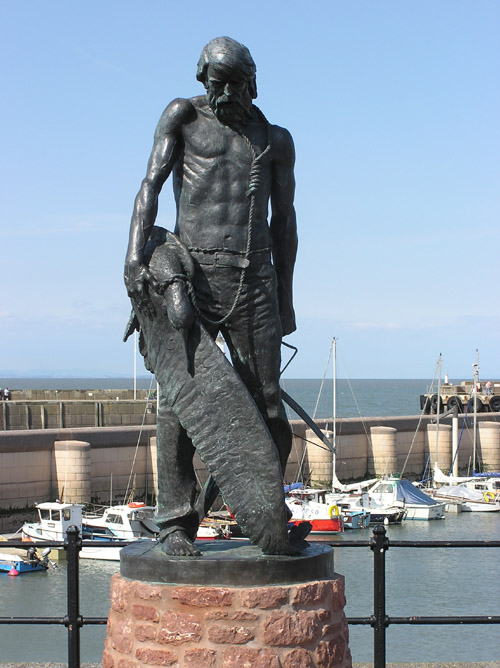 Hi Dr. Hall’s English 215 Students!
Hi Dr. Hall’s English 215 Students!
I’m looking forward to discussing Coleridge’s “Kubla Khan” and The Rime of the Ancient Mariner with you next week! As you read these two poems, take a look at some of the digital resources that I’ve collected below to help you understand the cultural contexts of these poems as well as their continued influence in our own time.
“Kubla Khan”
To hear the poem read by American poet Robert Kelly, click here: http://www.poets.org/viewmedia.php/prmMID/15831
About the poem
In the preface to Christabel, Kubla Khan, and the Pains of Sleep (1816), Coleridge descibes the composition of “Kubla Khan”:
Samuel Taylor Coleridge. From The Rime of the Ancient Mariner and The Vision of Sir Launfal (by Samuel Taylor Coleridge and James Russell Lowell). Published by Sampson Low, 1906.
In the summer of the year 1797, the Author, then in ill health, had retired to a lonely farm house between Porlock and Linton, on the Exmoor confines of Somerset and Devonshire. In consequence of a slight indisposition, an anodyne had been prescribed, from the effects of which he fell asleep in his chair at the moment that he was reading the following sentence, or words of the same substance, in ‘Purchas’s Pilgrimage:’ ‘Here the Khan Kubla commanded a palace to be built, and a stately garden thereunto: and thus ten miles of fertile ground were inclosed with a wall.’
The Author continued for about three hours in a profound sleep, at least of the external senses, during which time he has the most vivid confidence, that he could not have composed less than from two to three hundred lines; if that indeed can be called composition in which all the images rose up before him as things, with a parallel production of the correspondent expressions, without any sensation or consciousness of effort. On awakening he appeared to himself to have a distinct recollection of the whole, and taking his pen, ink, and paper, instantly and eagerly wrote down the lines that are here preserved. At this moment he was unfortunately called out by a person on business from Porlock, and detained by him above an hour, and on his return to his room, found, to his no small surprise and mortification, that though he still retained some vague and dim recollection of the general purport of the vision, yet, with the exception of some eight or ten scattered lines and images, all the rest had passed away like the images on the surface of a stream into which a stone had been cast, but, alas! without the after restoration of the latter:
Then all the charm
Is broken—all that phantom-world so fair
Vanishes, and a thousand circlets spread,
And each mis-shape the other. Stay awhile,
Poor youth! who scarcely dar’st lift up thine eyes–
The stream will soon renew its smoothness, soon
The visions will return! And lo! he stays,
And soon the fragments dim of lovely forms
Come trembling back, unite, and now once more
The pool becomes a mirror.Yet from the still surviving recollections in his mind, the Author has frequently purposed to finish for himself what had been originally, as it were, given to him. but the to-morrow is yet to come.
As a contrast to this vision, I have annexed a fragment of a very different character, describing with equal fidelity the dream of pain and disease.
Coleridge, Samuel Taylor. Christabel, Kubla Khan, and the Pains of Sleep. 2nd ed. William Bulmer, London, 1816. (Reproduced in The Complete Poems, Ed. William Keach, Penguin Books, 2004)
Opium
The “anodyne” that Coleridge mentions above is opium, a drug that was commonly prescribed for various illnesses throughout the eighteenth and nineteenth centuries in England.
History of Opium
- Brief timeline of opium trade from 3400 B.C. to 1996: http://www.pbs.org/wgbh/pages/frontline/shows/heroin/etc/history.html
- General history of the opium poppy from the U.K’s Kew Gardens: http://www.kew.org/plant-cultures/plants/opium_poppy_history.html
For more information on opium trade in the eighteenth-century British empire, take a look at this presentation:
The poem gives us a detailed description of Kublai Khan’s summer palace, Xanadu. Coleridge’s vision of this place is based on Samuel Purchas’ Purchas, his Pilgrimage, or Relations of the World and Religions Observed in All Ages and Places Discovered, from the Creation to the Present, which in turn was based on the account by the famous explorer Marco Polo. The Wikipedia page on the poem has excerpts from both of these texts.
.
Pop Music
Franky Goes to Hollywood, the band well-known for the song “Relax,” used Coleridge’s “Kubla Khan” as the inspiration for the their song “Welcome to the Pleasuredome.”
On the slightly wacky side of life, Xanadu is also the name of a 1980 film starring Olivia Newton John (who also played Sandy in the movie version of Grease) and Gene Kelly, in which a Greek muse helps an artist create a disco roller rink. The film also included a song by the same name, “Xanadu.”
The Rime of the Ancient Mariner
As you read the poem for the first time, here are a few images and other media to consider. Also, since much of the poem involves lengthy descriptions of intense winter storms (with which we are all too familiar in Wisconsin), I encourage you have something warm to drink, like hot chocolate or tea, while you read this poem.

A ghost ship grounded ashore is covered in ice. Photograph by L & A Schaul. From National Geographic Education.
Illustrations
Gustave Doré (a popular engraving artist of the day) illustrated the poem. The poem with illustrations can be viewed here: http://ebooks.adelaide.edu.au/c/coleridge/samuel_taylor/rime/
Film
Again, on the slightly wacky side of life, check out this 1977 experimental film by Larry Jordan which uses Dore’s engravings and is narrated by Orson Welles.
Part One
Part Two
Part Three
Part Four
Part Five



